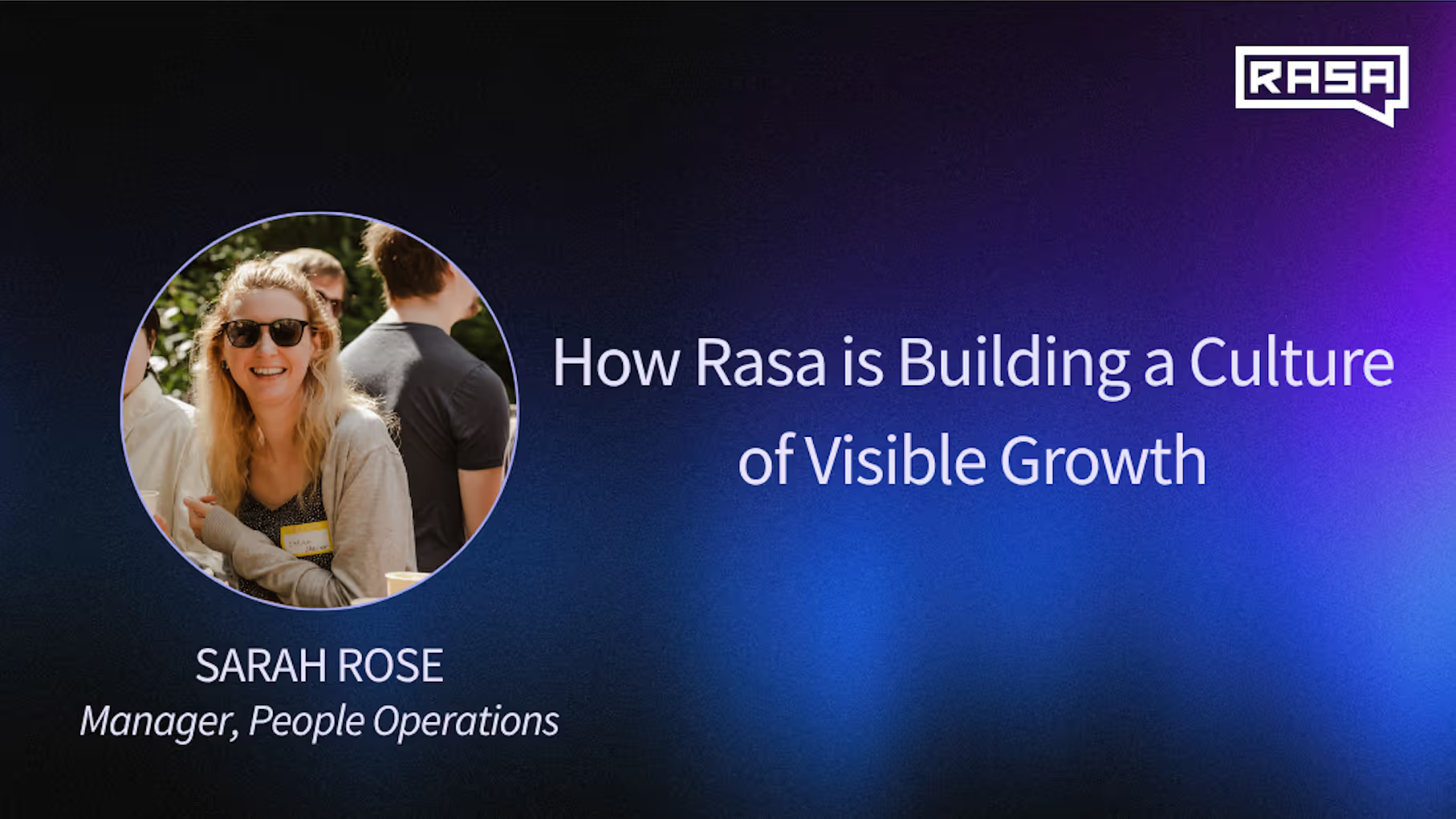1. Hi, Andrea. Tell us about yourself! What was your path to joining Rasa?
At the time I joined Rasa, I was running my own research studio, Reflexive Codes, where we helped product teams innovate in the software 2.0 paradigm. I loved being a consultant because I got to dip my toe into different problem areas, but I saw that if I wanted to have a real impact, I had to have a seat at the table and work with teams closely and consistently. I was already following the conversational AI space around this time and was head over heels when I was offered to join Rasa as the first UX researcher. I thought it was very serendipitous, given my educational background in linguistics and my experience working with ML products.
2. Take us through a typical day as a Senior UX Researcher. What types of projects do you work on?
I wear many hats as a team of one. I work horizontally across all product areas supporting designers with more tactical research initiatives but also running longer-horizon strategic studies. Additionally, I support PMs in continuous discovery. It’s a lot, but I find it very useful to have a high-level understanding of opportunities spanning the entire product.
3. Which areas of your work are you most passionate about?
I’m most passionate about continuous discovery. I like bringing the team along with me on conducting interviews, discussing insights, and prioritizing opportunities with PMs. That said, I also love doing analysis, revisiting data, reading between the lines, and teasing out patterns and meaning. I learned the hard way that in small to mid-sized companies research reports almost never work and I try to make the research process as collaborative as possible.
4. What's an important problem you're solving at Rasa?
I think the most important problem that we are working on currently is how to structure the complex and fast-evolving opportunity space of conversational AI. This is invaluable to avoid running after the next shiny thing in a largely technology and hype-driven industry.
5. How would you describe Rasa in three words?
Human, smart, ambitious.
6. How do you collaborate with other teams at Rasa?
I have quite a lot of autonomy in shaping the ways I work, given that I am not embedded in any one particular squad. I am a big fan of cross-functional insights-sharing sessions where we discuss learnings across problem areas. It was quite tough to highlight the value of these at first because remote environments can often turn transactional, especially in a fast-moving industry. But I think it’s worth creating space for conversations that do not necessarily end in action items. And it really helps foster a culture of learning and curiosity.
At the same time, we are also quite rigorous with archiving our learnings through an atomic research approach. So we not only discuss what we have learned but make sure that the insights are documented and easily searchable and retrievable at any point in time. This increases the shelf-life of the research exponentially.
7. What does a culture of diversity mean for you at Rasa?
It means creating an inclusive environment where people from all backgrounds and identities feel valued, respected, and able to bring their full selves to the workplace. It also means actively working to dismantle systems of oppression and creating opportunities for underrepresented groups. It's about creating a space where everyone can thrive, not just survive.
8. How has working at Rasa helped your professional development?
I think both the biggest challenge and also biggest blessing for me was my autonomy. I took it to heart to not follow a typical UX research strategy playbook but rather spot the weaknesses of the entire org and try to leverage my skills to intervene where it’s most needed. I couldn’t just do what you would do as a consultant: start with stakeholder interviews, formulate research questions, collect data, etc. but I often had to be creative and take on tasks that required research skills but don’t always fall under the purview of UX research. This made me learn a lot about how to maximize my impact by shaping product culture.
9. What's the most interesting thing you've learned lately?
This is only tangential to my day-to-day work at Rasa, but I’ve recently come across the field of bioacoustics and how artificial intelligence can help decode nonhuman communication. What if in the future, virtual assistants will not only be trained on human conversations but also on data from across the entire ecosystem? I believe that AI could augment our day-to-day lives so much more if it complemented and not only mirrored our thinking. I know it sounds a bit sci-fi, but after living in an almost symbiotic relationship with my dog for more than 8 years, I find that other species can teach us a lot about spotting patterns that our brains are simply not wired to see.
10. What's the best career advice you've received?
I think the most under-appreciated career advice would be: to learn how to translate your know-how (procedural, tacit knowledge) into know-what and know-why (descriptive knowledge). Us practitioners (both ICs and managers) often get really good at doing what we're doing only by performing tasks. But I think there’s value in taking the time to reflect on what we’ve learned implicitly and making it more explicit through teaching or writing. That’s when you get better at not only practicing what you know but also transferring your knowledge. And there’s no better way to be successful in your career than to help others grow.
Thanks, Andrea! You can find Andrea on LinkedIn and her personal website.

.avif)




